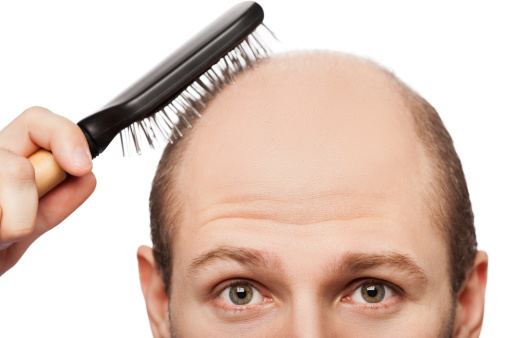 Hair loss, particularly male pattern baldness, can drastically lower a man’s self-confidence and even affect his social life. New research published in BMJ Open shows that certain patterns of male hair loss carry other more serious risks as well. According to the recent study, if a man has hair loss at the top (crown) of his head, he may be at a significantly increased risk of heart disease.
Hair loss, particularly male pattern baldness, can drastically lower a man’s self-confidence and even affect his social life. New research published in BMJ Open shows that certain patterns of male hair loss carry other more serious risks as well. According to the recent study, if a man has hair loss at the top (crown) of his head, he may be at a significantly increased risk of heart disease.
Hair Loss and Heart Disease Research
Two databases – Medline and the Cochrane Library – were searched by the current researchers to look for studies that had investigated male pattern hair loss and heart disease. The researchers were able to find 850 reports that had been conducted between 1950 and 2012; however, only 6 of these potential reports matched the criteria needed for their research. The included studies had been conducted between 1993 and 2008 and included approximately 40,000 men.
Advertisement
The researchers first looked at three cohort studies that had followed participants for 11 years. These reports showed that men who had lost most of their hair were at a 32 percent increased risk of heart disease compared to men that maintained a full head of hair. When the researchers limited the age of the men to those younger than 55-60 years of age, the risk of developing heart disease when a man had significant hair loss climbed to 44 percent.
The remaining three studies showed similar results to the previous three cohort studies. In these studies, men who had significant hair loss had a 70 percent increased risk of developing heart disease with younger balding men once again being more susceptible to heart disease with an 84 percent increased risk.
Severity of Hair Loss and Heart Disease Risk
The researchers found that the risk of heart disease was correlated with the extent of a man’s baldness. However, this was only true when the hair loss was seen at the top of a man’s head. This is referred to as the “vertex”. With extensive vertex hair loss there was a 48 percent increased risk of heart disease, while moderate vertex hair loss posed a 35 percent increased risk of heart disease. Lastly, with minimal vertex hair loss, there was an 18 percent increased risk of heart disease.
Additionally, the researchers found that a receding hair line alone was not associated with a significant increased risk of heart disease. Men with only frontal hair loss were at a 22 percent increased risk of heart disease, while men who only had hair loss at the crown were at a 52 percent increased risk. However, men that had a receding hair line, as well as crown hair loss, had a significantly higher risk (69 percent) of heart disease compared to men that had a full head of hair.
Potential Reasons behind the Link between Hair Loss and Heart Disease
The researchers state that there are many reasons that may explain the link between male pattern hair loss and an increased risk of heart disease. They point out three possible explanations that may be responsible for the connection. The first is that the body is in a state of chronic inflammation. The second is that there is an increased sensitivity to testosterone. And the third is that there is an increased resistance to insulin which may lead to diabetes. The rationale behind the researchers citing these three reasons as possible links is that they all indirectly promote heart disease.
While further research is needed to determine the mechanism by which male pattern baldness and hair loss are related, there is a definite link, particularly between cortex hair loss and heart disease. Men that have moderate to significant baldness at the crown of their head should be monitored closely for heart disease. Furthermore, modifiable risk factors for heart disease, such as diet, exercise and lifestyle factors, should be addressed to reduce the risk of heart disease.
